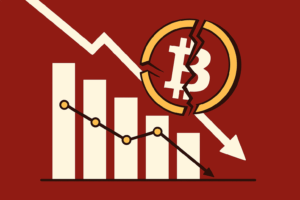For over a decade, cryptocurrencies occupied a speculative corner of the investment landscape—fascinating to some, fringe to many. But that’s no longer the case. What began as a decentralized experiment is steadily becoming institutionalized. Today, global asset managers, sovereign wealth funds, and investment banks are no longer sitting on the sidelines—they’re building strategies.
The shift isn’t theoretical. In 2024 alone, the approval of spot Bitcoin ETFs opened floodgates of institutional capital. BlackRock’s fund alone attracted over $10 billion in inflows within months. Goldman Sachs has quietly—but meaningfully—revived its crypto trading desk, offering derivatives and structured products for digital assets. Meanwhile, sovereign wealth funds from Singapore and the Middle East are making long-term bets on tokenized infrastructure.
Why Now? The Institutional Case for Crypto
The narrative driving this pivot is no longer about chasing hype. It’s about diversification, access to new markets, and preparing for a digitized financial future. According to Fidelity’s 2024 survey, 81% of institutional investors now believe digital assets have a place in a balanced portfolio. For institutions managing trillions, crypto is being reassessed not as a gamble, but as a hedge—and in some cases, an opportunity to capture alpha.
The rollout of regulated investment vehicles has also smoothed the path. Bitcoin spot ETFs provide exposure through familiar channels. Crypto hedge funds now collectively manage over $184 billion in assets. Banks like JPMorgan and Santander are testing tokenized bonds, using blockchain rails to increase settlement efficiency.
What the Case Studies Reveal
BlackRock’s entry has been particularly symbolic. For years, CEO Larry Fink was critical of Bitcoin. His 2024 pivot—calling Bitcoin “an asset class institutions can’t ignore”—marked a turning point. The success of their ETF doesn’t just validate demand—it redefines legitimacy.
Goldman Sachs offers another telling example. Having shuttered its crypto desk in 2018, the firm reopened it with a broader mandate. From derivatives trading to asset tokenization, Goldman is betting on a future where blockchain is integrated across the financial stack—not siloed from it.
Dispelling Persistent Myths
Skepticism remains, particularly among traditional investors accustomed to rigid regulatory frameworks and predictable asset behavior. But the institutional response to these concerns is pragmatic:
- Volatility is managed through diversified allocation and derivatives.
- Regulatory uncertainty has given way to growing clarity—especially in markets like the U.S. and EU.
- And hype cycles are giving way to infrastructure: custody, compliance, and capital flows.
Put simply, institutions don’t chase memes—they build ecosystems. And those ecosystems are forming around crypto.
What This Means for Private Capital and Family Offices
For high-net-worth individuals and family offices, the institutional pivot offers both validation and a roadmap. Exposure to digital assets no longer requires speculative leaps—it can be pursued via regulated funds, ETFs, or crypto-native hedge vehicles.
But more importantly, following institutional behavior offers a compass. Asset managers tend to lead—not follow—major structural shifts. And in this case, the movement is clear: from the fringe to the foundation.
Conclusion
What we’re witnessing is not just adoption—it’s normalization. Crypto is being wired into the machinery of global finance. Institutions aren’t joining the party because they must. They’re here because they believe the next decade of capital markets will be built, in part, on blockchain.
As the 2024 Fidelity Institutional Report put it:
“The world’s largest asset managers are entering crypto—not because they have to, but because they see the opportunity.”







